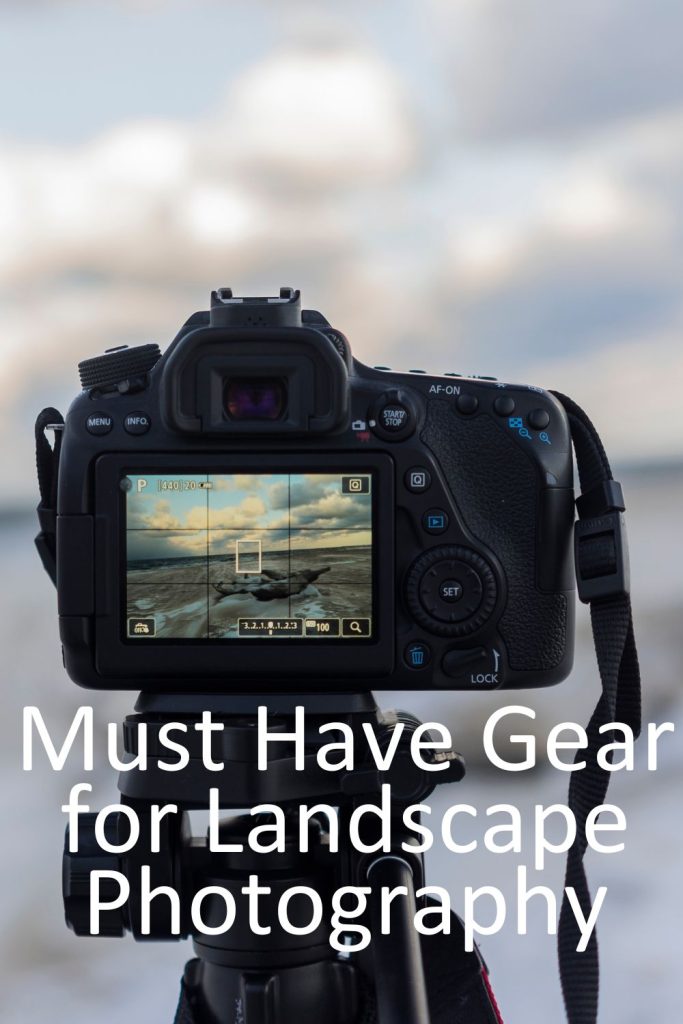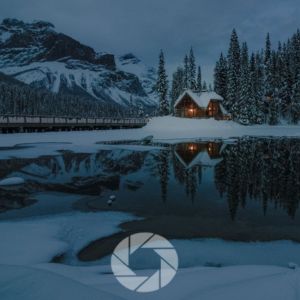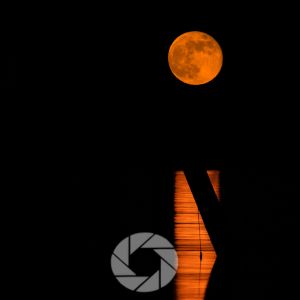
Stepping into landscape photography for the first time can feel overwhelming. The internet is full of gear lists, endless debates and plenty of advice that assumes you’re ready to spend thousands of dollars (or HAVE 1,000s of dollars).
But the truth is, you don’t need the latest or most expensive equipment to start creating meaningful images. What you need is a simple, reliable setup that lets you learn, experiment, and grow.
In this guide, I’ll walk you through beginner landscape photography gear that balances affordability, accessibility, and quality.
We’ll talk about cameras, lenses, and a few essential accessories, but we’ll also keep the bigger picture in mind: the real purpose of gear is to connect you more deeply with the land you’re photographing, not to get lost in specifications.
I receive commissions from links in this post, thank you for your support
Beginner Landscape Photographers Need This Gear
Beginner Landscape Photography Camera Options
Beginner Landscape Camera Basics
The first question most beginners ask is: Should I get a DSLR or a mirrorless camera? Both can work beautifully for landscapes, but there are some differences to be aware of.
- DSLRs are bulkier but often more affordable, especially if you’re buying used. They have long battery life and access to decades of compatible lenses.
- Mirrorless cameras are lighter and more compact. They have electronic viewfinders that show you exactly what your exposure will look like, which is especially helpful when learning.
For beginners, either type works, but mirrorless systems are quickly becoming the standard. If you’re just starting out, you might find them less intimidating and more intuitive.
Another choice is sensor size. APS-C cameras are generally cheaper and lighter, and their cropped sensor can actually be an advantage when using telephoto lenses, since it gives extra “reach.” Full-frame cameras capture more detail and handle low light better, but they cost more.
My advice? Start with what feels comfortable in your hands and within your budget. I started on a Canon digital Elph from the early 2000s (to be honest I had a polaroid back when you shook them). These low budget cameras taught me a ton about photography.
Regardless of the camera you buy, you’ll learn more from practice than from chasing specs.
Gear I Use
- Canon R5 (the 1st Version)
- Sturdy Tripod
- Lens Cloths
- Remote Trigger (or use in Camera timer)
- Wide Angle (Rokinon 14mm)
- Zoom (Canon 24-105mm)
- Long Range Zoom (100-500mm)
Best Camera for Landscape Photography Beginner
Some excellent beginner-friendly options include entry-level mirrorless cameras from Canon, Sony, or Fujifilm, or budget DSLRs from Nikon or Canon. These cameras are easy to learn on, and they give you plenty of room to grow before you’ll need to upgrade.
Remember, the “best” camera isn’t the most expensive one, it’s the one you’ll actually take outside. A mid-range beginner camera or even your phone will serve you well, and it’s far better to spend your money on trips, gas, or park passes than on chasing the latest model.
Beginner Landscape Photography Gear Checklist
| Category | Recommended Gear | Notes for Beginners |
|---|---|---|
| Camera | Entry-level DSLR, mirrorless (APS-C or full-frame), phone camera | Don’t worry about specs; focus on comfort and affordability. |
| Lens | Wide-angle zoom (10–18mm APS-C / 24 – 70mm full frame) | Ideal for sweeping landscapes and foreground emphasis. |
| Tripod | Lightweight beginner tripod | Stability is essential for sharp images and long exposures. |
| Filter | Circular polarizer (CPL) | Cuts glare, deepens skies, enhances reflections. |
| Bag | Comfortable backpack (buy a camera one when you can afford it) | Protects gear and makes hikes easier. |
Beginner Landscape Photography Lenses
If the camera is your foundation, the lens is the tool that shapes your vision. For beginners, the most useful choice is usually a wide-angle zoom lens.
Something in the 24-70mm range (on a full-frame) or 10–18mm range (on an APS-C) is excellent for capturing sweeping skies, expansive mountain ranges, and foregrounds that draw the viewer into the scene.
A wide-angle lens is often the first step, but as you grow, you may want to add a telephoto lens (70–200mm or similar). Telephotos are fantastic for isolating subjects, compressing mountain layers, or capturing distant light on a peak.
However, if you’re just starting, a kit lens (often 18–55mm) will let you experiment with both wide and short telephoto perspectives without extra investment.
Think of wide-angle lenses as open, expansive, breathing room into your frame. Telephotos are more like grounding, solid, pulling details together into focus. Both are useful; you’ll find your balance as you experiment.
Essential Accessories for Beginners
Tripod for Beginners
A sturdy tripod is one of the most important pieces of beginner landscape photography gear. It keeps your camera steady for long exposures, lets you shoot in low light without blur, and frees your hands to carefully compose your image. You don’t need to spend a fortune; there are plenty of lightweight, budget-friendly options.
I like to think of the tripod as the element of Earth: solid, stable, holding you steady no matter what season or conditions you’re shooting in.
CPL Filter for Landscapes
A circular polarizing (CPL) filter is another essential accessory. It reduces glare from water and wet surfaces, deepens the blue of the sky, and enhances contrast in clouds. More than almost any other accessory, it helps your photos look polished straight out of camera.
Camera Bag & Extras
Don’t overlook the basics. A comfortable bag keeps your gear safe and makes it easy to hike with. Extra batteries and memory cards might not feel exciting, but running out of power or space on a once-in-a-lifetime trip is something every photographer regrets.
Affordable & Accessible Gear Choices
Used Beginner Landscape Photography Gear
Photography doesn’t need to be as expensive as everyone thinks it is. In fact, one of the smartest moves a beginner can make is to buy used gear. I buy used gear all the time.
Reputable dealers like Adorama or B&H test and rate their equipment, so you can pick up cameras and lenses in excellent condition at a fraction of the price. This not only saves money but also aligns with sustainable, eco-friendly landscape photography practices.
Buy Beginner Landscape Photography Gear
If you prefer new gear, look for beginner “kits” that pair a camera body with a starter lens. Refurbished gear from manufacturers is another affordable, reliable option.
Whether you buy new or used, the point is the same: gear is a tool, not a barrier. The real magic lies in getting outside, connecting with light and land, and practicing your craft.
Long-Tail Guidance & Beginner Projects
What Gear Do I Need to Start Landscape Photography?
At its simplest, you need three things: a camera/phone, a lens, and a tripod. That’s your starter kit. You can add accessories like filters, a bag, or spare batteries as you go, but don’t let long gear lists overwhelm you. Start small, focus on learning exposure and composition, and let your gear grow with your skills.
Affordable Beginner Landscape Photography Gear
Many companies offer landscape photography starter kits or affordable bundles. But even if you only have a modest camera and one lens, you can still create beautiful work.
Remember, the first photographs ever taken of mountains, forests, and rivers were made with gear far less advanced than the simplest cameras available today.
In fact, constraints often spark creativity. Knowing you only have one lens or one battery forces you to look more carefully, notice details, and be more intentional about every shot.
How to Feel Inspired With Basic Gear
Gear doesn’t take photos….you do. When you feel uninspired, remember that your equipment is there to serve your connection with the land, not the other way around. Even a simple setup can tell profound stories if you use it with patience and awareness.
Think of the seasons: a sturdy tripod supports you in winter frost just as much as it does under summer’s blazing sun. A polarizer is just as useful when autumn leaves shimmer on a lake as when spring clouds scatter across a blue sky. Your gear is a partner through cycles of change, helping you translate those shifts into lasting images.
From an eco-spiritual perspective, the key is not owning everything but learning to listen. Earth, Air, Fire, and Water reveal themselves differently depending on your lens, your timing, and your openness. A basic kit is more than enough to capture those revelations.
Conclusion
The world of photography gear can feel overwhelming, but it doesn’t have to be. With a simple setup of camera, lens, tripod, and a few accessories, anyone can begin.
Beginner landscape photography gear doesn’t need to be expensive or complicated; it just needs to get you outside, connecting with the land and practicing your craft.
Start where you are, with what you have. Buy used if you want to save money, or begin with an entry-level kit. Add accessories slowly, as your skills and needs grow.
And most importantly, remember that the gear itself is only a tool. The real power lies in your vision, your patience, and your willingness to engage with nature’s cycles.
If you’d like to practice these skills hands-on, my landscape photography tours are designed to help beginners learn how to use their gear in the field while building a deeper connection to light, land, and season.
📸Learn for free!
➡️ FREE Wallpapers and Guides
➡️ DISCOUNTS on future Tours & Tutorials
➡️ TIPS for improving Your photography

I don’t share your Info with anyone. You can unsubscribe at anytime.
- Beginner Landscape Photographers Need This Gear
- Beginner Landscape Photography Camera Options
- Gear I Use
- Best Camera for Landscape Photography Beginner
- Beginner Landscape Photography Gear Checklist
- Beginner Landscape Photography Lenses
- Essential Accessories for Beginners
- Affordable & Accessible Gear Choices
- Long-Tail Guidance & Beginner Projects
- How to Feel Inspired With Basic Gear
- Conclusion
- 📸Learn for free!





